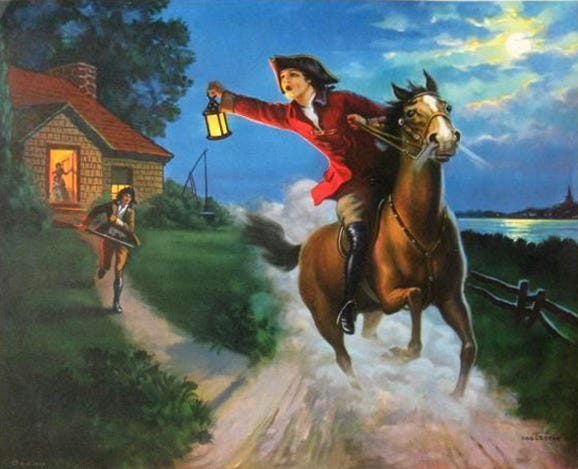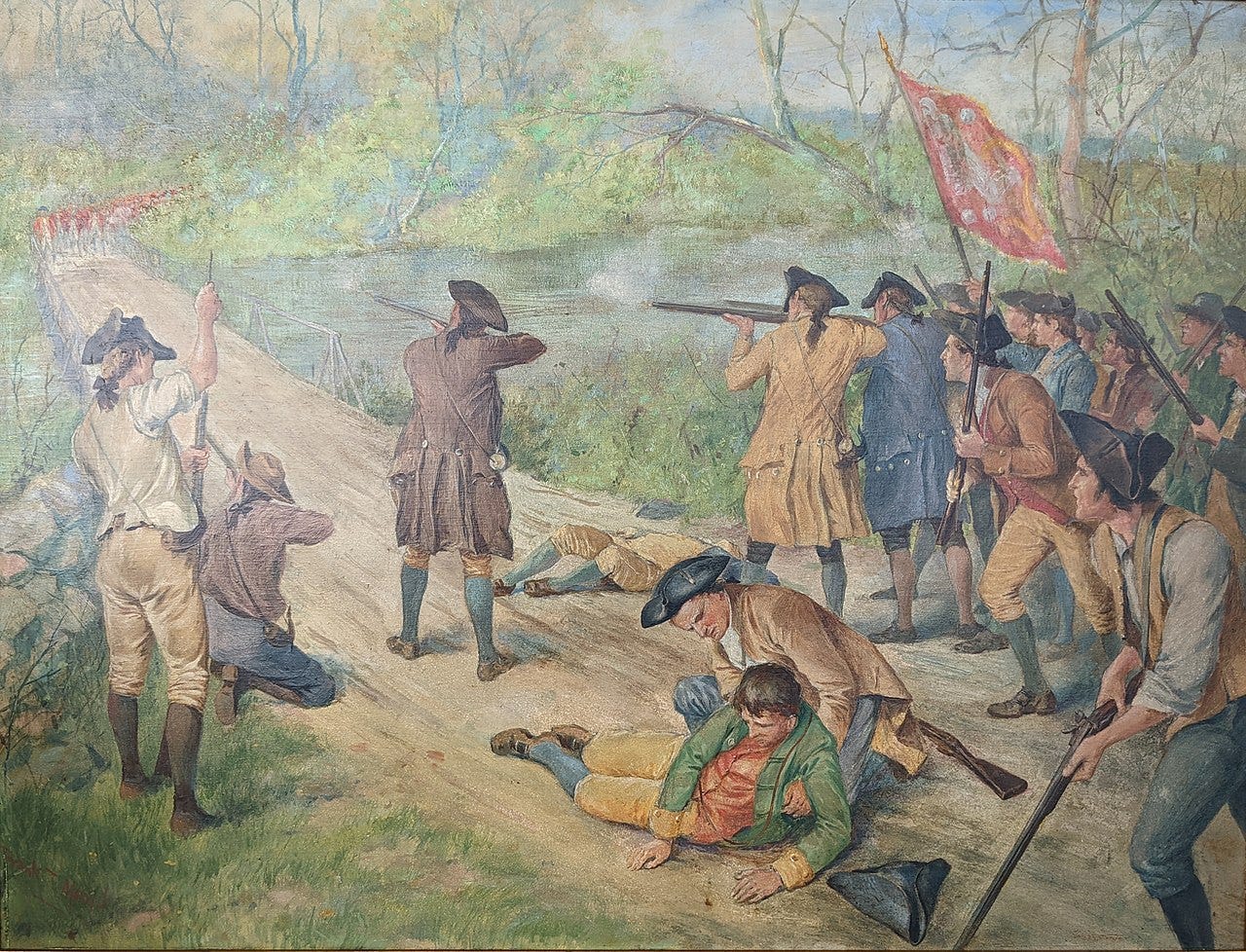A Nation Forged in War
Part 3: The Spark Ignites
The simmering tensions between the colonies and Great Britain finally erupted in gunfire on April 19, 1775. The night before, Paul Revere, along with William Dawes and Samuel Prescott, embarked on the now-famous midnight ride, a desperate attempt to warn colonists of the approaching British troops. This act of courage, immortalized (though inaccurately) in Henry Wadsworth Longfellow's poem, marked the beginning of the American Revolutionary War. At dawn, about 700 British troops reached Lexington Green and encountered a force of around 80 militia.

The exact sequence of events remains murky, but shots were fired, leaving eight colonists dead. Thus sparked the first battle of the American Revolution, later immortalized in poetry by Ralph Waldo Emerson. The British continued to Concord, splitting into smaller groups to search. But search as they might, they couldn’t find the weapons cache they were tasked with confiscating. The colonists had known for weeks about the British plan to seize their weapons, and had moved them to other locations. Frustration mounted, and the British were faced with growing colonial resistance as more militia arrived from neighboring towns. Their search completed unsuccessfully, the British began their march back to Boston.
The colonists, alerted by riders and the sound of gunshots, saw their numbers swell as more Minutemen arrived from neighboring towns. They wouldn’t let the British march away from Concord unchallenged after killing their fellow colonists. Chasing the retreating army, they took advantage of the terrain. They adopted guerilla tactics learned in the French and Indian War, firing from behind stone walls and houses, inflicting heavy casualties on the British until they reached the safety of Charlestown. This fighting style would become a hallmark of the American Revolution.
Even Earl Percy, the British leader who rescued the British forces by riding out with 1,000 more troops to protect their retreat, recognized the value in the new tactic, and the importance of their experience fighting in this terrain:
Whoever looks upon them as an irregular mob, will find himself much mistaken. They have men amongst them who know very well what they are about, having been employed as Rangers against the Indians & Canadians, & this country being much covered with wood, and hilly, is very advantageous for their method of fighting.
— Hugh Percy, 2nd Duke of Northumberland, 1775
Older veterans were also involved. When Earl Percy left Boston, he didn’t take spare ammunition wagons for his men or cannons. Once he left, another British commander directed two ammunition wagons to follow him under guard. However, these wagons were intercepted by a small party of older veterans. They had not joined the militia companies because they were all over 60 years old. The senior militia men ambushed and attempted to hold up the ammunition wagons. When the British army regulars ignored them, they opened fire, killing the lead horses, two sergeants, and wounding the lead officer. The survivors ran or surrendered.
Word of the "shot heard around the world" reached Philadelphia, and in May, the Second Continental Congress convened. Delegates from the thirteen colonies gathered, determined to present a united front against British aggression. One of their most crucial decisions was the establishment of the Continental Army. George Washington, a respected Virginia planter with experience from fighting the French and Indian War, was chosen to lead this relatively unorganized group of volunteers.
The war stretched across eight long years, with crucial battles fought from the frozen north to the sweltering south. General Nathanael Greene, a skilled strategist, displayed remarkable resilience leading the Continental Army in the grueling Southern Campaign. He used layered defenses and strategic retreats to exhaust the enemy army.
Ordinary soldiers distinguished themselves as well; William Jasper was offered a lieutenant’s commission after heroically recovering and raising the flag of the half-completed Fort Moultrie during a day-long British navy attack. He turned down the commission because he couldn’t read or write, but was given a roving commission instead. He was later wounded in battle and died clutching his regiment’s standard.
Deborah Sampson was a woman who disguised herself as a man to fight alongside her fellow patriots and endure the hardships of war alongside her male counterparts.
James Lafayette, an enslaved Black American, earned a legislative emancipation for his service as a double-agent. Posing as a runaway slave, he fed false information to the British while providing accurate information to the Americans.
Daniel Morgan, a teamster-turned-rifleman, trained snipers and led daring raids that helped turn the tide and outraged the British.
By the rude bridge that standed the flood,
Their flag to April’s breeze unfurled,
Here once the battled farmers stood,
And fired shot heard round the world
The foe long since in silence slept;
Alike the conqueror silent sleeps;
And Time the ruined bridge swept;
Down the dark stream which seaward creeps.
On this green bank, by this soft stream,
We set today a votive stone;
That memory may their deed redeem,
When, like our sires, our sons are gone.
Spirit, that made those heroes dare,
To die, and leave their children free,
Bid Time and Nature gently spare
The shaft we raise to them and thee.
-Ralph Waldo Emerson, 1836,
written for the dedication of a monument commemorating the battles of Lexington and Concord
Behind the battles, the Continental Congress faced a constant struggle to finance the war effort. Soldiers needed weapons, ammunition, food, shelter, and uniforms. Printing money led to inflation, and securing taxes from individual colonies proved difficult. Haym Salomon, a Polish immigrant and financier, not only acted as a spy within the British navy while being held prisoner, but provided crucial financial support to the Continental Army during its darkest hours. These loans provided vital funds for military supplies, salaries, and crucial support for the war effort. In fact, the final blow to the British general Charles Cornwallis at Yorktown could not have been struck without Salomon’s assistance in paying for the food and supplies necessary to the operation. Without him, the American army would not have marched.
The American Revolution is more than just battles and Founding Fathers. It's a story of ordinary citizens rising to the challenge, exemplified by the countless sacrifices they made. Their legacy is the very foundation of the United States, a nation built on ideals of liberty, self-government, and the pursuit of a more perfect union. These ideals continue to inspire and challenge us today.



